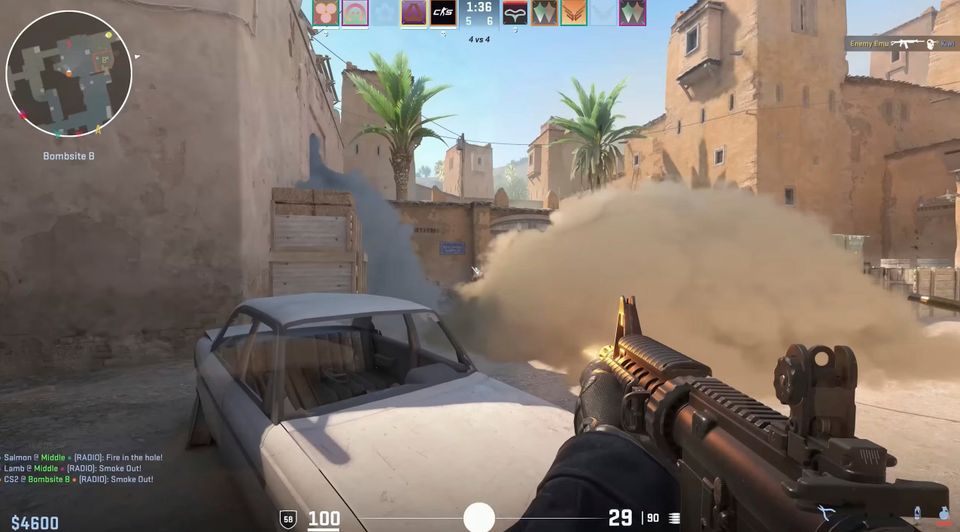DrDisrespect Wife: Insights into Personal Life and Media Presence
Stepping into the personal life of popular streamer DrDisrespect introduces a lesser-known figure: his wife. Known online as Mrs. Assassin, she shies away from the public eye, opting instead for privacy and support from the sidelines.
Mrs. Assassin is not just a background figure; she plays a pivotal role in the life and career of DrDisrespect. Together, they have navigated through many challenges, with her support being a constant in his ever-evolving streaming journey. Her influence and presence offer stability amidst the chaotic world of online fame.
While details about her remain intentionally scarce, her impact is undeniably felt. She reminds us that behind the public personas we follow, there are real individuals and relationships that contribute to their success. Exploring more about Mrs. Assassin gives a fuller picture of the life behind the streams.
DrDisrespect
DrDisrespect, also known as Herschel "Guy" Beahm IV, is a well-known personality in the online gaming community. He gained popularity for his character, which is characterized by a distinctive persona featuring sunglasses, a mullet wig, and a tactical vest. His energetic style and engaging content have earned him a significant following.
Born in 1982, DrDisrespect has been involved in the gaming industry for several years. He initially worked as a level designer at Sledgehammer Games, contributing to titles like Call of Duty: Modern Warfare 3. His transition from game development to streaming marked a major career shift.
He began his streaming career on platforms such as Justin.tv and later Twitch, where he became known for games like H1Z1, PUBG, and Call of Duty: Warzone. His streams often feature high-level gameplay, entertainment, and interaction with viewers, which contributed to his popularity.
DrDisrespect's unique character is defined by his catchphrases and humorous, though sometimes controversial, commentary. This approach creates a dynamic atmosphere during his livestreams. He has built a brand that extends beyond streaming, including merchandise and partnerships with gaming companies.
In 2020, DrDisrespect faced a controversial ban from Twitch, the details of which remain undisclosed. Despite this, he continues to stream on YouTube and maintains a strong presence in the gaming community.
His influence extends to various domains, including collaborations with major gaming and technology brands. He remains a prominent figure, continually adapting to the evolving landscape of digital entertainment and streaming platforms.
https://www.youtube.com/watch?v=HTOTBIZjK1M
Personal Life
Dr Disrespect, a popular video game streamer, has had a significant journey in his personal life. His partner, known as Mrs. Assassin, has been a central figure in his life, supporting him through various professional and personal challenges.
Meeting Mrs. Assassin
Their story began during their college years. The couple met through mutual friends at a university event. Her charm and intelligence captured Dr Disrespect's attention, leading to a deep connection. He often credits her as a stabilizing presence.
As their relationship grew, she became not just a partner but an essential collaborator. Her understanding of his career and unwavering support helped him navigate the highs and lows of streaming life. Her influence extends beyond personal life into his professional world.
https://www.youtube.com/watch?v=4xzdpu0BYN0
Marriage and Family
The couple took their vows in a private ceremony attended by close friends and family. This union has been a cornerstone of his stability and motivation.
They are parents to a daughter, affectionately referred to as Baby Disrespect. Parenting has added a new dimension to their relationship, bringing them closer. Sharing family moments, their journey as parents is characterized by mutual respect and shared responsibilities. Their family life is kept mostly private, balancing public attention with personal privacy.
 DrDisrespect Wife: Insights into Personal Life and Media Presence
DrDisrespect Wife: Insights into Personal Life and Media Presence  Bind Valorant: Mastering Strategies and Tips
Bind Valorant: Mastering Strategies and Tips  Ascent Valorant Map Strategies Unveiled
Ascent Valorant Map Strategies Unveiled  Best Audio Settings CS GO: Optimize Your Gameplay Experience
Best Audio Settings CS GO: Optimize Your Gameplay Experience  How Many Skins Are in League of Legends?
How Many Skins Are in League of Legends? 












